|
|
"In a
subsequent interview with Swiss journalist Emile Hilderbrand (June,
1926), he (Mustafa Kemal Ataturk) castigated in the strongest
language the Ittihadist leaders for deporting "and massacring
millions of our Christian subjects."
Vahakn N. Dadrian, "Documentation of the Armenian Genocide
in Turkish Sources." (Genocide: A Critical Bibliographic Review,
edited by Israel Charny, Vol 2. 1991; pp.86-138.) As part of his
"weasel history," the unscrupulous Vahakn Dadrian cites this
falsification at many turns, and as Director of Genocide Research at the
Zoryan Institute, even includes this "evidence" in his short list of Zoryan's "persuasive"
documents. (Entitled: "Kemal Ataturk Admits Reality of the
Armenian Genocide in a 1926 Interview.") The reader can go
directly to Zoryan's page for a reading of what the fake article has to say.
|
The invaluable work of the forgery-busting professor,
Turkkaya Ataov, has been showcased in TAT's "Forgeries" page, but this particular one was given
short shrift, since the English language version proved elusive. (Thanks to
Hector for the submission of what follows.) Since the Armenian activists
constantly keep referring to the fake 1926 interview or article by Emile
Hilderbrand, appearing in the Los Angeles Examiner, it is as important
as ever to demonstrate the ways in which this fakery falls apart. Note
that from every angle this weasel work has no chance of holding up. Bravo to
Prof. Ataov for the thoroughness of his research.
Points to bear in mind:
• The tone and content
are not in keeping with Ataturk's known writings
• No Ataturk biographer has given credence to this "interview"
• The Armenian who provided the "interview" claimed Ataturk had
written it as an article in 1923, three years before the assassination plot
Ataturk was responding to in the "interview"
• The "interview" wrongly claims the forgiven informant as a woman
• There is no trace of this "interview" having taken place in
Turkish records, known to meticulously document the activities of the great
leader
• There is no trace of the Swiss journalist, either as non-Germanically
spelled in the "interview," or in other variations of the name, in
the records of Switzerland
• The "interview" originated in Boston, an Armenian hotbed of the
USA, and provided by a news service for which no record exists
What follows featured English
errors that Prof. Ataov would not have made, and is not the perfect version.
|
|
|
| |
ANOTHER FALSIFICATION
“Statement” (1926) Wrongly Attributed to Mustafa Kemal Atatürk
This short monograph aims to expose yet another Armenian falsification, which attempts to
make use of the name and reputation of the great Mustafa Kemal Atatürk, the leader of the
Turkish War of National Liberation and the founder of the Republic of Turkey.
The Los Angeles Examiner of August 1, 1926 published an article (see Annex1)
announcing that it was written “by Mustafa Kemal Pasha” and that it was also “an
interview with Emile Hilderbrand, a Swiss artist and journalist, on June 22”.
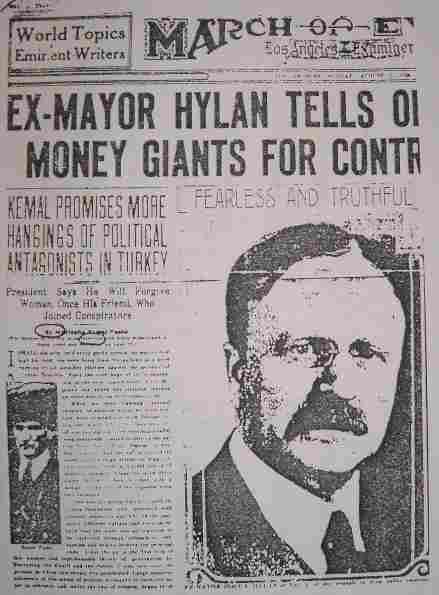
Annex 1; front page of the Aug. 1, 1926 Herald
Examiner; see next graphic
below for an examination of the circled words
Some Armenian circles have been resorting to this article, expecting others to believe a
priori that the words have fallen from the mouth of the Turkish leader. They provide no
evidence at all, in support of their assertion, except stating (in obvious contradictory
terms) that the composition is an article by the Turkish President and also an
interview with a “Swiss Journalist”, about whom no information is offered.
It is actually the responsibility of the Armenian circles to prove the factuality and the
relevance of the so-called “article”. With utter disregard of such accountability on
their part, the Turkish side takes the initiative to exhibit serious doubts about the text
and finally to prove the falsity of the statement.
A Turkish proverb goes as follows: “A mad man throws a stone into a well, and it takes
forty wise men to take it out.” The whole “article” or “interview” pretends to
be the Turkish leader’s outburst (!) against his domestic rivals— in reaction to an
attempt to assassinate him in 1926. Further, in a section of the text, the Turkish leader,
is quoted as acknowledging the loss of Christian lives on accounts of the acts of the
Ottoman Government.
The alleged text enjoys wide-scale distribution by groups of Armenians and their
supporters. Some of them (repeat?) this “statement” over and over again, distribute it
to politicians and public opinion leaders, including members of the US Congress and others
as evidence of their claims that even this well-known Turkish leader had accepted the “genocide”.
Had this “interview” been trustworthy, this could have been a persuasive argument!
|
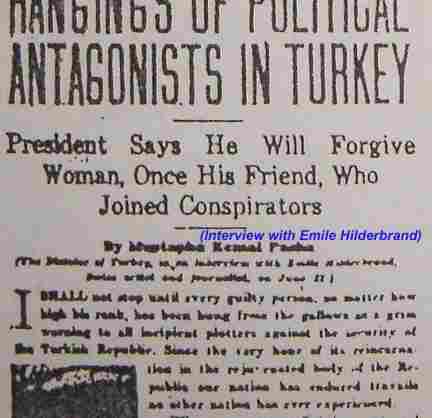
"By Mustapha Kemal Pasha;
The Dictator of Turkey in an interview
with Emile Hilderbrand, Swiss artist and journalist, on June 22." Is it an
interview?
What kind of an interview would have the interviewee beginning the
article with "I SHALL..." and
also featuring the interviewee's byline, as
though the interviewee had written the piece?
|
It appears that the falsifiers who put this text together aspired to include a short
“statement” on the Armenians as well— although the writing as a whole only
goes to expose the author’s prejudices, their ignorance on several scores and a
rhetoric so alien to that of M. Kemal. But endlessly repeated polemics eventually
take on a life of their own in Armenian hands. They make use of them in their quest
for universal recognition of their own self-image as innocent victims.
The authenticity of this alleged “interview” in a minor Hearst newspaper,
printed way back in 1926 in a far away corner of the world, should certainly be
questioned. Those who wish to refer to it in one way or another have to investigate
whether or not it is fact or fiction. Bit the Armenian propagandists and their
supporters are not known for meticulousness when it comes to a fact that can
diminish their “cause”.
However, various legitimate questions have to be posed in regard to the purported
“interview”. For instance, the whole fraud is based on the assumption that M.
Kemal “wrote” the article or granted the “interview” in immediate response
to a plot of a small group of individuals to assassinate him in the summer of 1926.
A certain Nishan Nercessian, an American Armenian who now lives in Westminster,
California, reprinted that page of the Los Angeles Examiner with his own
inserted article ( see Annex 2), stating categorically that M. Kemal wrote this
article “in 1923”. This “Nercessian version” is doubly absurd since the text
contains references to the assassination attempt in 1926, that is, three years
later!
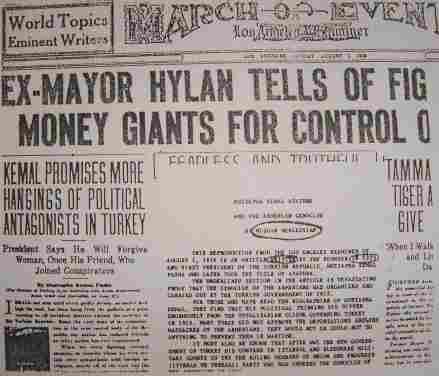
Annex 2: Nercessian's insertion.
Close-up below.
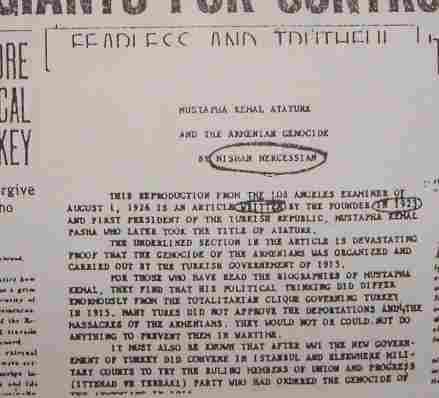
Mustafa Kemal granted several interviews to a number of foreign correspondents but
the Turkish texts of these pronouncements have always appeared in more than one
national publication. However, he is not known to have signed his name to articles
appearing in the foreign press. Moreover, the Los Angeles Examiner was
printed in the State of California, known for a high concentration of American
Armenians. Further, a small note at the bottom of the third column states that the
copyright of the text rests with the “World-Wide News Service, Inc. of Boston”.
That city happens to be the second largest center in the United States where
Armenians congregate. The fact that this publication occurred in one of the two
leading focal points of Armenian assemblage and that the copyright is entrusted to a
corporation in the other one immediately brings mind a plot to serve an interest as
exemplified by the present wide distribution of this “statement”. Incidentally,
The Encyclopedia of American Journalism does not cite a news agency by that name.
Had this encyclopedia listed the World-Wide News Service, it would have appeared on
page 524.
|
| |
The assassination attempt was stirring event for Turkey in the mid-1920s. There is
considerable truth in the pronouncement that some individuals are faithless even to their
own emancipators. Mustafa Kemal was an almost legendary folk hero, who led a people to
safety. He was liked, respected and admired. He was also envied by some. The years of 1925
and 1926 had been eventful. On January 13 1925 Halit Pasha, one of the bold commanders of
the National Liberation War, was murdered. This incident was still a part of public
memory. Political reaction, though not widely spread, mounted while progressive reforms
followed one after another. The closing of the Dervish Convents was a blow to diehard
conservatives. Some considered the adoption of a new calendar, a new time system and the
wearing of European head-gear a “calamity”. To them, these were evidences of the
outright “atheism”. Turkish women began to appear at dances. Foreign firms were also
nationalized. Turkey entered 1926 amidst the waves of progressivism on the one hand and of
political reaction on the other. It was in the first months of that year that Swiss Civil
Code was adopted. The Italian Penal Code was now the canon of justice.
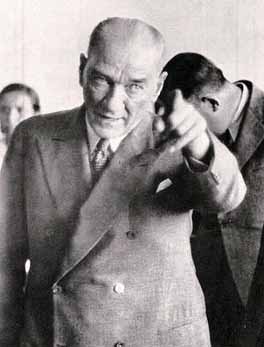 |
|
Mustafa
Kemal in the 1930s |
A young,
reckless ex-Member of the Parliament, who had lost in the previous elections, found
killers as well as a big-wig from the “ancient regime”, who paid for these
adventurers. They planned to assassinate the President of (the) Republic. Mustafa Kemal,
on the other hand, was on a tour of the country to determine the pulse of the people. He
left for the capital unpretentiously on May 7, 1926. He was greeted with esteem in every
town en route. He reached the Marmara Sea region in the first days of June. After a short
repose at Bursa, he meant to pass to Izmir, which had become, in a way, his “birth place”
after September 9, 1922— the days he liberated it from degrading enemy occupation. There
had been warm reception and speeches in Bursa and Balikesir.
But just before the move in the direction of Izmir, he received a most urgent telegram
from the Governor of that city that a plot against him had been discovered. The plan was
discovered to the police by a certain Şevki (from Crete), a boatman who was supposed
to take the criminals to one of the Greek islands after the assassination. One must pause
for a moment at this point to underline the fact that there was no doubt who the informant
was. The person was Sevki, the boatman, not a lady, as the Los Angeles Examiner article
claims. It is unthinkable that Mustafa Kemal would not know what the whole nation then
knew, namely who the informant was. Not only was he given all the information on the plot,
but this fact was in all the papers. This error alone is sufficient to prove that the
whole “statement”, attributed to Mustafa Kemal, is a forgery.
|
|
The confessions of the boatman established that Ziya Hursit, the reckless ex-deputy,
planned the whole affair. He was at once arrested in a hotel room, where guns and
bombs were hidden. Three hired killers, who were no more than vagabonds previously
convicted, were also apprehended immediately. Ziya Hursit’s confessions led the
police to other collaborators, some of whom had distinguished themselves as
adventurous gunmen.
Mustafa Kemal reached Izmir the next day and behaved as if nothing had happened. He
was received enthusiastically by the people. With the unmasking of the event, he
issued the first statement to the nation. It ends likewise: “My humble human body
will, one day, certainly turn into earth. But the Republic of Turkey will endure
forever, and the Turkish nation will march forward unhesitatingly on the road of
civilization, equipped with principles guaranteeing its security and happiness.”
This is a modest statement that exalts the nation, the newly founded Republic and
the principle on which the state rests. Mustafa Kemal has never uttered the kind of
words that Emile Hilderbrand or the Los Angeles Examiner pretended that he
said. Instead, he made the following statement to a delegation of the residents of
Izmir: “If I die, I am confident that our nation will not deviate from the path we
have been pursuing together. I have absolute trust in that. The desperate actions of
our adversaries cannot put out the fire of reforms within us.” These are the
expressions of a self-confident statesman assured of his correctness and success.
The President’s meeting with Ziya Hursit, the planner of the assassination
attempt, upon the former’s initiative, is instructive in terms of perceiving the
personality and the qualities of the statesmanship of Mustafa Kemal. This leading
ringleader was “a swash-buckling adventurer”. Addressing the criminal in a
courteous manner, Mustafa Kemal asked: “Haven’t we worked together for a long
time-for a common purpose?” Hursit replied: “Yes, sir.” “Then, why this
attempt? You even being a leader!” “That’s true, sir. I had come here to
assassinate you, but couldn’t do it.” Mustafa Kemal emotionally commented: “This
is what I expected least from you.”
It was Ziya Hursit, who wanted to see him again the next day. He seemed very much
impressed by the President’s gentleness and tolerance. When Hursit was granted the
audience, he expressed his satisfaction for the clemency shown in the first meeting.
He repeated the same confessions he had already made. He even wanted to take shelter
under the President’s kindly wings. Mustafa Kemal, refined and courteous as ever,
could only say: “I am not a revenge-seeking man. But the affair is now in the
hands of the court. There is no other solution than waiting for its outcome. I have
no powers to interfere”. Absolutely, no trace of arrogance, no indignation of
severity, no sign of arbitrariness!
|
| |
Mustafa Kemal is also known to have summoned one of the hired assassins, who did not
know the President personally. He inquired: “But how could you kill a person you
had never seen? You might have picked the wrong man!” The would-be assassin
explained that the President was to be pointed out to him before he fired. Mustafa
Kemal gave his own revolver to him and said: “ I am Mustafa Kemal. Take this
revolver and shoot me.” The man sank to his knees.
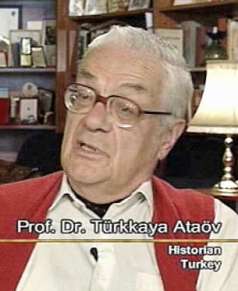 |
|
Dr.
Turkkaya Ataov (from "Sari Gelin")
|
The same person cannot use the wild and
heedless phraseology attributed to him by the Los Angeles Examiner. Foreign scholars
of Turkish studies as well as the Turks themselves know that Mustafa Kemal possessed
a distinctive elegance in speech and in writing. He had an overall manner and
smartness peculiar to himself, so evident in all his conversations, oral
communications and written records. The famous six-day Speech and other
published writings provide ample proof of his exceptional courtesy and modesty as
well as his eloquence and articulation.
An expression that can be termed as “extreme” in his own limits is the adjective
“decadent” (mütereddi) which he is recorded to have used once in relation of
the Sultan Vahdettin, who fled Istanbul abroad a foreign battleship and whom the
Turkish Grand National Assembly deposed as caliph the next day.
Similarly, he never referred to the political career of Enver Pasha (1881-1922) as
“criminal ambition”, as so put by the Los Angeles Examiner. Although
Enver Pasha, a member of CUP triumvirate ruling the Ottoman Empire after 1913, was
known to be a man of different reasoning and character, Mustafa Kemal never uttered
a word about him that could be considered degrading. He was always quick to praise
Enver’s qualities; he only saw as inadequate to the tasks required to perform. For
instance, during the Tripolitanian War with Italy (1911) Mustafa Kemal, with his
hard-headed logic, thought of Enver as prone to wishful thinking. The two had
differed fundamentally over the defence of the country and the role of the German
generals during the First World War. In spite of these and other disagreements on
policy, dissimilarities in character and understandable competition between the two,
Mustafa Kemal was never heard making a humiliating remark about Enver Pasha.
|
| |
Other thoughts expressed as well as the style of the whole text do not remind one of the
great Atatürk at all. I would like to draw attention of the reader to the following Los
Angeles Examiner phrases: “I shall not stop until (all) have been hung from the gallows…
I put the axe… I sent into exile… I crushed them with iron hand and for example, had
over sixty of their leaders hanged at dawn… I am about to deal with ruthlessly…
suppress it with exemplary ruthlessness.” These phrases are in no way analogous to
statements that we know to belong (to) him.
Probably no statesman, least of al Atatürk, would ever express the preceding thoughts or
the following ones, as so expressed in the Los Angeles paper, about his adversaries: “ I
would have more respect for them had they planned an armed revolution… taking the field
in a manly fashion…” He is not known to have said on any occasion, “I… prayed…and
my prayers were to be unanswered”. He never pretended to have such communions.
In connection with the assassination attempt, the “Court of Independence” (Istiklal
Mahkemesi, as it was then called) started its deliberations on June 27 and pronounced its
verdict on July 13. Those who had participated in the plot were given death sentences, but
the political opponents of the government, that is, the founders and the leaders of the
Progressive Republican Party, who had been temporarily put under custody on account of the
suspicion that some of them might have cooperated with the would-be assassins, were
acquitted. Mustafa Kemal had even invited one of them, Ali Fuat Pasha, to dine with him
and had treated him with utmost kindness. Ali Fuat was later elected a Deputy of Konya,
with Atatürk’s support.
The trial of the would-be assassins over, a new trial of some former members of the Union
and Progress opened up in Ankara. Close to forty accused were acquitted for lack of
connections with anything that might have been termed as crim[inal]. The “Courts of
Independence” themselves had been liquidated on March 7, 1927. The 150 individuals,
whose citizenship were cancelled, were later pardoned during Atatürk’s time, with
special law numbered 7527. These are the events on the historical record in respect to
Mustafa Kemal’s relations with his political rivals.
Thus, the ideas and their wording as pronounced in the Los Angeles Examiner text cannot
have poured from the mouth or pen of Mustafa Kemal Atatürk. But there is more definite
evidence pointing to the falsity of the supposed interview.
|
|
None of the books and articles written on the life, achievements, speeches and
interviews of Mustafa Kemal refer to a “Hilderbrand interview”. Not a single
scholarly or official publication cites this article. First, if the supposed
interview, had taken place on June 22, 1926, it would inescapably appear in several
official and semi-official organs of Turkish Government.
It does not appear, for instance, in the Ayin Tarihi (The History of the Month), a
very important official monthly issued regularly since 1923 by the (Turkish)
department of Press and Broadcasting. (See Annex 3, for the cover of the month of
July 1926 and the pertinent pages covering the assassination attempt). Not only does
the text of such an interview not appear in the pages of this significant register,
but there is also no mention of a Swiss journalist having come to Turkey and
requesting audience with the President.
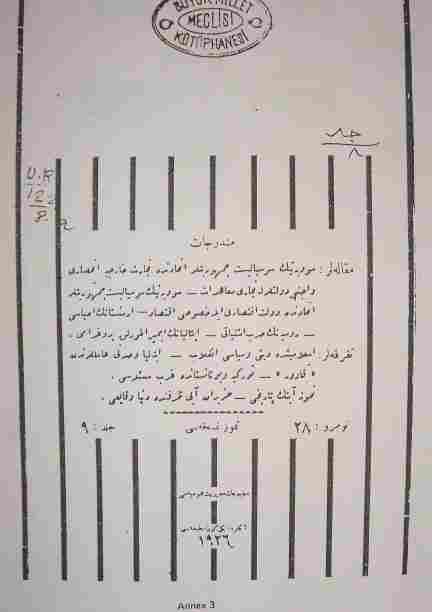
Annex 3: "The History of the
Month," July 1926 cover
Ayin Tarihi published news and articles on domestic and world events, giving an
over-all picture of life in Turkey and abroad. It certainly devoted space to the
policies, activities and the pronouncements of the state leadership. The news
concerning the assassination attempt is on pages 1433-1435 of volume 9 number 26
(July 1926). There is no information about a certain Swiss artist or journalist or
about an interview granted to him. There is no such reference in the previous pages
up to the events of June 16, 1926, the day the assassination plot was uncovered or
in the pages leading to August 1, 1926, the date on which the supposed interview was
printed in Los Angeles. It is inconceivable for the founder of the state and the
President of the Republic to consent to an interview with a foreign correspondent on
a host of important issues without even a mention of the event by the Press and
Broadcasting Department.
After all, the same publication devoted pages for the months of June, July and
August of 1926, to home and international news. Here are some highlights: Foreign
trade monopoly in the Soviet Union, Trade Agreements with foreign states, State and
private economy of the Soviets, Religious and political evolution in Islam, Italy’s
imperial program, the United States and the Lausanne Convention, Revolutionary
committees in Syria, Events in Ethiopia, Financial crisis in France, Assassination
attempt on the Spanish King, the Future of Abd al-Qasem in Morocco, the Frontier
dispute between Bulgaria and Rumania, Dictatorship in Greece, Reception at the
Turkish Embassy in London, General Pildusky’s statement, the Question of Iraqi
frontier, the Briand Cabinet, the Pan-American Congress in Panama, Bloodshed in
Mecca, Flood caused by the Elbe and the Oder, the resignation of the Canadian Prime
Minister, the Italian experiment of taxing capital, the French Mandate in Syria, the
Visit of the British Conservative MPs to the Soviet Union, the Text of the Italian
Spanish agreement, Communal clashes between the Hindus and the Moslems in India, the
Expulsion of Zinoviev from the Soviet Politburo, Religious laws in Mexico…
|
| |
News about Turkey as well covered almost all moves of the leading statesmen, even
including the departures of the Cabinet members from Ankara and their stays in various
provinces. Their moves to the different corners of the country were duly recorded. Mustafa
Kemal’s activities were certainly entered. There were all sorts of information,
dispatches, communications, bulletins, cables and reports on the domestic scene, ranging
from the economic picture of Adan to the mobile exhibition touring the country… Not a
single word about a Swiss journalists (or artist) and his encounter with the President.
Let us show the same scrutiny in connection with the relevant issues of the Hakimiyet-i
Milliye, a daily paper which at that time was much more than semi-official gazette printed
in the new capital. Its pages were frequently devoted to the proclamations of the Turkish
Government and its leaders. It carried information, speeches, interviews and texts of laws
and treaties as well as editorials on national and international issues.
I read all the news items, the feature of articles and the editorials of that paper, from
the headlines to the advertisements in the last pages, starting with June 17 1926 (No.
1777) down to August 1, 1926 (No. 1819). The first is the date on which Mustafa Kemal made
his well-known announcement in respect to the plot, and the second is the day when the Los
Angeles paper printed the so-called “interview”. If the interview had really taken
place, it would be somewhere between these two dates. The Los Angeles paper cites “June
22” as the date of the interview. I have taken notes on each and every issue,
encompassing a span of a month-and-a-half. Allow me to say at the beginning what I have to
repeat at the end: There is not even a faint reference to a “Swiss artist and journalist”
or to the imaginary interview.
Let us remember again that these were the days when an attempt on the life of the Turkish
President was planned. The plot was discovered on June 16, 1926. The papers devoted
editorials and articles to that important even and also printed news items on other
domestic and international occurrences, ranging from amendments to the Polish Constitution
or the coal strike in England to Turkish mosaics or the new trade act.
|
|
Since the Los Angeles Examiner states at the very beginning of the text and right
underneath the name of “Mustafa Kemal Pasha” that the interview had taken place
on ”June 22”, one might as well start with summarizing the contents of this
important paper right from the issue of the previous day. The editorial of June 21,
1926 (for the first page of the paper, see Annex 4) is entitled “An Attempt to
Assassinate”. The article to its left has the following title: “Let Us Console
Ourselves”. The news item further down announces that the prime Minister has left
for Izmir, where the criminal act was supposed to take place. Other items are Italy’s
relations with the League of Nations, the growing tensions between the United
Kingdom and the Soviet Union, the Congress of the Turkish teachers of Kütahya, etc.
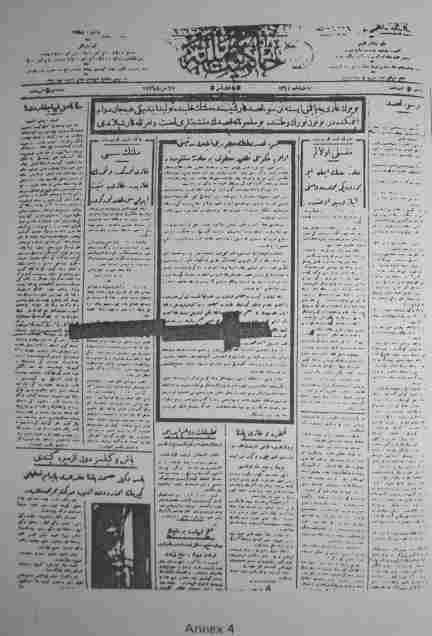
Annex 4: Front page of the daily,
Hakimiyet-i Milliye, June 21, 1926
The next issue of the paper was published not on June 22 but on June 26, 1926 (for
the full six pages of that issue, see Annex 5). The fact that there has not been an
issue in between the two may be ascertained by the number of the issues printed in
each case on the very upper left corner of the first page. For the June 21 issue the
number is 1781 and the [one] for the June 22 issue is 1782. The paper then resumes
normal daily publication [with] the June 27 issue bearing the number 1783 (see annex
6).
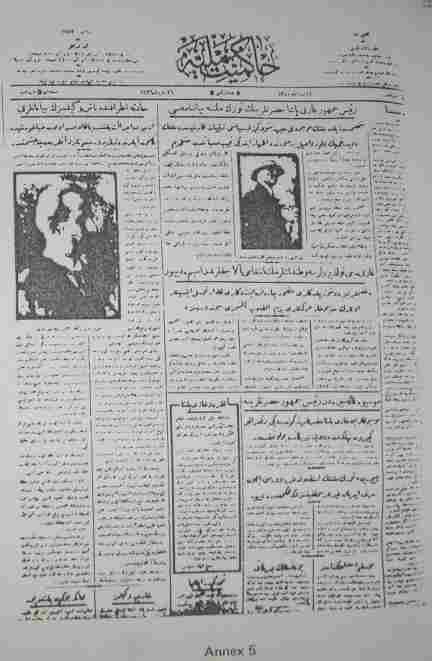
Annex 5: June 26, above and below; three
pages (not six) featured here
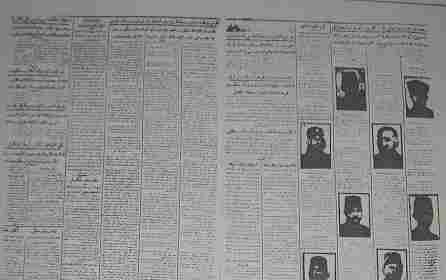
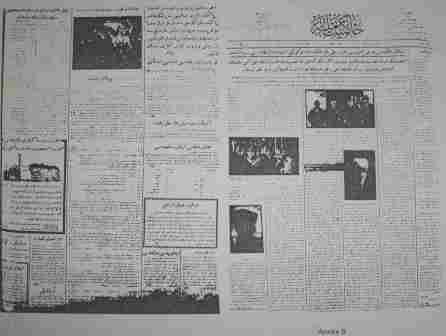
Annex 6: The June 27 issue
Had the interview taken place on June 22, it would have appeared on the June 26,
1926 issue of the paper. There is absolutely no reference to it at all. The
editorial on the first page is again on the assassination attempt; next to it the
President’s and the Premier’s statements are printed. The paper announces that
the trials of the criminals are to start that very day. There is also a message of
sympathy from M. I. Kalinin, the Chairman of the Presidium of the Soviet State. Page
2 is devoted to sentiments expressed on the event and reactions abroad, as well as
news on the arrest of suspects. It also carries new on the Little Entente, Brazil,
and the formation of the French Cabinet. Page 3 is mostly devoted to the confessions
of Şevki, who disclosed the plot, with some coverage of the Turkish Ambassador
in Warsaw, the Disarmament Conference, a statement by the British Colonial Office,
Yugoslav-Bulgarian relations and developments in Spain. Page 4 is a full page
commentary on the plot, equating the attack on the President with an attack on the
nation itself. Pages 5 and 6 are devoted advertisements.
|
| |
There is no reference to the Swiss writer in June 27 issue or later. Some editorials
center on the Attorney’s demand, and some issues refer to further confessions.
Some, still, devote space to the foreign reactions to the plot. Although I have
extensive notes on all the issues, I do not think that it is necessary to summarize
all the news. The issue for June 29, however, quotes from an exclusive interview
with the President, who says (in part): “Human beings should always move towards
high, magnanimous and sacred ideals. Only such preoccupation may satisfy a man’s
conscience, thought and human concepts. Such men are exalted, no matter how great
the sacrifices are, and such actions need always be in the open…” He adds that
the followers of such actions are necessarily honest, tolerant and sincere. He
contrasts such people with others, who think, feel and act in secrecy, resorting to
concealed ways and means.
Further, the issue for July 3 speaks about the impressions of an American journalist
who apparently visited Turkey at that time. The paper quotes [the] American
journalist as having said that [the] Turkish leader was Westernizing his country,
that the evolution was rapid and that the impact of one man was most obvious…
There is no mention of a Swiss newspaperman.
The issue for July 5 carries, among other things, a translation of a New York Times
article which underlines Turkey’s rapid progress in the last few years. It also
discloses the confessions of a certain Sabit Bey, one of the accomplices… The
issue for July 6 concentrates on the tribute of the people of Izmir to the President…
As days pass, space is still devoted, but in somewhat diminishing degree, to the
trials.
The succeeding issues do not refer to any interview between a Swiss [journalist] and
the President. There are, however, translations of several articles written by
foreigners on Mustafa Kemal. For instance, the issue for July 10 reproduces the
Turkish version of an article printed in a leading Albanian paper describing the
Turkish President as an outstanding hero of contemporary times. Likewise, the issue
for July 12 gives a summary of an article by two American professors who draw a
picture of Turkey as a country recognizing no force beyond its own will of
sovereignty but also respectful of international law. There are frequent references
to the same article in the later issues (July 15 and 17, 1926). In the last
mentioned the American authors are quoted to have said that the Christian
missionaries have deliberately exaggerated events to be able to collect as much
financial contribution as possible.
|
| |
It is of great importance to note that there is a reference to the visit of a Pravda
correspondent, Kalitsov (July 22), who apparently came to Turkey but did not have an
interview with the President. It is inconceivable that the paper devoted a space to a mere
visit of a foreign journalist and never mentioned another, assuming for a moment that the
latter had also an audience with the leader of the country.
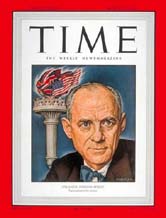 |
|
Journalist Clarence Streit
|
It is instructive to remember at this position that Mustafa Kemal’s
interview with Clarence K. Streit, a correspondent of the Public Ledger of Philadelphia,
was published not only in the American paper (March 21,1921), but also in the Hakimiyet-I
Milliye, the daily I have examined [above]. The same article may also be found in the
archives of the Turkish Ministry of Foreign Affairs. It was also late[r] printed in the
first volume of a Turkish Ministry of Culture publication, entitled Atatürk’ün Milli Dış
Politikası (The National Foreign Policy of Atatürk, pp. 257-276). A leading Turkish
librarian devoted an article to that interview .
So many sources acknowledge this interview because it actually took place. Apart from the
English version that appeared in the Philadelphia paper, we have in our hands the Turkish
text as well, each authentically belonging to the interviewed person. It is useful to
stress once more the words of Mustafa Kemal, as expressed to the Public Ledger
correspondent, on the very issue of the Ottoman transfer of the Armenians:
“After making allowance for the enormous exaggerations always made by
those who accuse their enemies, the transfer of the reduces itself to this—The Armenian
Dashnak Committee, then in the service of Tsar, had caused the Armenian population behind
our troops to revolt when the Russian Army began its great 1915 offensive against us.
Obliged to retreat before the superior numbers and materials of the enemy, we found
ourselves constantly between two fires. Our convoys of supplies and wounded were
pitilessly massacred, roads and bridges destroyed behind us and terror reigned the Turkish
countryside. The bands, which committed these crimes and which included in their ranks
Armenians able to bear arms, were supplied with arms, munitions and provisions in Armenian
villages where, thanks to the immunities accorded in the capitulations, certain foreign
powers had succeeded during peacetime in establishing enormous stocks for this purpose.
The world which regards with indifference the fashion in which England, in peacetime and
far from the battle field, treats the Irish nation, can not in all justice complain of the
resolution we were obliged to take relative to the transfer of Armenian population… The
massacres and devastations caused by the Armenian bands while the Russians were evacuating
our eastern provinces are sufficiently known. The American General Harbord, with whom I
talked at Sivas and who after having visited these regions and having made edifying
observations on the conduct of the Armenian bands, wrote to tell me that all I had related
to him was true, is a witness from whom American opinion can usefully inform itself. The
Dashnaks, moreover, continued their crimes in the zone of Kars and Oltu until the
conclusion of the Alexandropol Treaty…”
|
|
This quotation is from the English text as it appeared in the Public Ledger. In this
authentic account, Mustafa Kemal underlines the conspiratorial nature of Armenian
armed aggression and the bloodshed caused by them, a fact endorsed by the American
general as well. The direct quotation sharply refutes the falsification that the
Armenian circles in Los Angeles and Boston apparently wanted, then, to ascribe to
the Turkish statesman.
All this evidence brings [to] mind the suspicion that a “Swiss artist and
journalist” by the name of Emile Hilderbrand has never come to Turkey. I have
already indicated that there is no information about him in the official Ayin Tarihi
and the semi-official Hakimiyet-I Milliye. Moreover, there is no mention of him in
the reliable Atatürk ve Türkiye Cumhuriyeti Tarihi Kronolojisi: 1918-1938 ( The
Chronology of Atatürk and the History of the Turkish Republic) by Professor Utkan
Kocatürk, printed by the Turkish Historical Society. (For the cover page of the
register, see Annex 7). This chronicle records all similar events giving dates and a
few words of explanation in each case. Had such an interview taken place, it would
have been mentioned on page 458 of this important work.
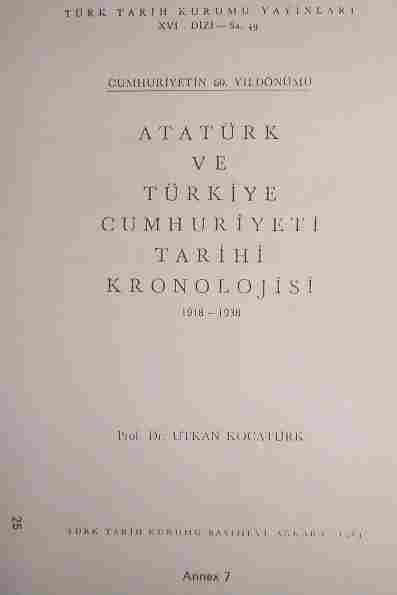
Annex 7: Cover page of the register
There is no such entry in any of the three volumes of Atatürk’ün Söylev ve
Demeçleri (Atatürk’s Speeches and Statements), printed several times by Turkish
Historical Society. The collected texts range from Mustafa Kemal’s talks in
several towns to speeches in the Turkish Grand National Assembly or from his
evaluations of the elections to the amendments proposed for the Constitution. Had
there been a reference to the supposed interview with the Swiss journalist, it would
have appeared before page 330 of the first volume, before page 242 in the second
volume and after page 80 of the third volume.
One must emphasize that the third volume of these collected statements includes
twenty-one interviews with foreign reporters (see Annex 8). The interviewers, the
dates and the pages in which they appear are as follows: Chicago Tribune, May 10,
1920(p. 14); United Telegraph Agency, January 17, 1921 (p. 15); Lawrence Shaw Moore
of the Christian Science Monitor, August 1921 (p. 27); Entransingeant, January 11,
1922 (p. 30); Petit Parisien, January 23, 1922 (p.30); Reuter News Agency, September
25, 1922 (p.43); Daily Mail, September 26, 1922 (p.44); Chicago Tribune, September
16, 1922 (p.45); Richard Danin for Le Figaro, October 13, 1922 (p.46); United Press
News Agency, October 24, 1922 (p.48); Petit Parisien, November 2, 1922 (p.49); Paul
Henriot for Le Journal, December 25, 1922 (p.55); Neue Freie Press, September 27,
1923 (p.63); Maurice Pernot, October 29, 1923 (p.66); New York Herald, May 4, 1924
(p.74); Times, December 11, 1924 (p.74); Le Martin, March 8, 1928 (p.81); Le Martin,
March 12, 1928 (p.82); Voissische Zeitung, March 21-24, 1930(p.84); Gladys Baker,
June 21, 1935 (p.97); and the Yugoslav journalists, October 29, 1936 (p.100). This
list does not include an interview with a Swiss journalist.
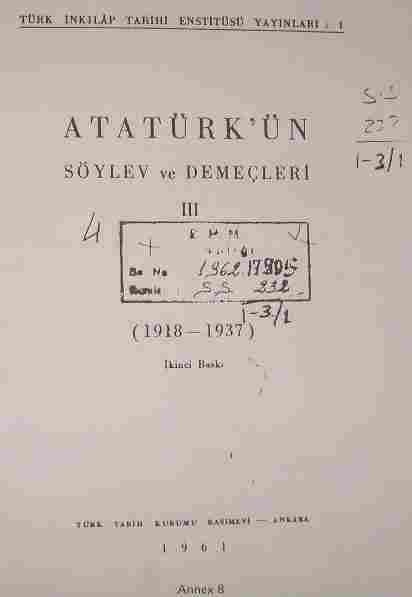
Annex 8: Ataturk's interviews with
foreign reporters
|
| |
Similarly, Mustafa Baydar’s Atatürk’le Konuşmalar (Interviews with Atatürk) is
a volume specifically devoted to such encounters (for cover, see Annex 9). For instance,
it includes interviews with Turkish writers (Ruşen Eşref, Falih Rifki, Yakup
Kadri, Celal Nuri, Hakki Tarik, Ahmet Şükrü, Yunus Nadi) and the following foreign
personalities, papers or news agencies: General James G. Harbord, Paul Herriot, Grace
Ellison, Maurice Pernot, Madame Titaina, General Douglas McArthur, Gladys Baker, Ion
Antonescu and the correspondents of the United Press, Daily Mail, Chicago Tribune and
Petit Parisien. There is no mention of an interview with a Swiss journalist in this
important collection as well.
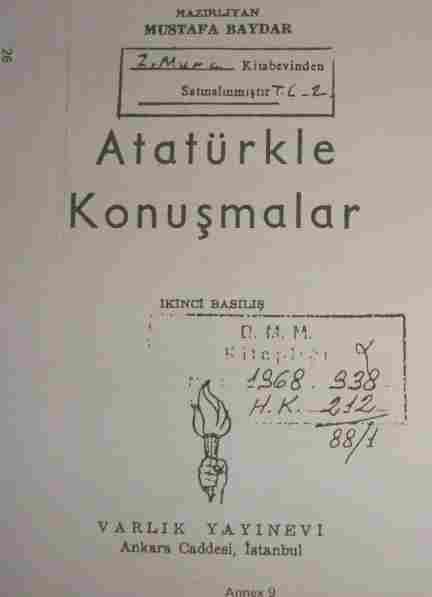
Annex 9: Interviews with Ataturk
Several photographs showing Atatürk with foreign visitors have been published since the
early days of the Ankara Government. They include, not only political figures ( such as
the Kings of Afghanistan, Iraq, the Royal Princes of Japan and Sweden, the Greek Premier,
the Soviet General K. Voroshilov, the US General D. McArthur and the Ukrainian
representative M. Frunze), but also various personalities such as French authors ( Claude
Farrere and Paul Herriot), German archeologists (such as Professor Giesses), several
historians and linguists from various countries or a group of American fliers who had come
to Turkey. Mustafa Kemal is seen with each and every one of them and with many more
visitors.
There is no such photograph of the Swiss journalist— not that its non-existence is
conclusive by itself, but this fact as well is one of the constructive evidence supporting
the very critical suspicion that he was most probably never in Turkey, to begin with.
All these premises legitimately bring mind another doubt. Did somebody by that name ever
live? He may or may not have. But research in the leading Swiss reference books such as
annuals, almanacs, journals and other records, as well as official replies received from
the National Library in Switzerland have not been able produce any evidence that a man by
the name of Emile Hilderbrand (as so spelled by Los Angeles Examiner) or
approximate spellings such as “Emil Hildebrand” or “Hildebrant” has lived in and
around 1926. Dictionnaire historique et biographique de la Suisse printed in 1928, has no
entry for him. Had he been included, he would have appeared in pp. 96-97(see Annex 10). He
does not appear in the Lexicon der zeitgenössichen Schweizer Künstler, devoted to Swiss
artists. Had he been in that publication, his name would have appeared in pp. 167-168.
Both of these volumes are principal Swiss reference works.
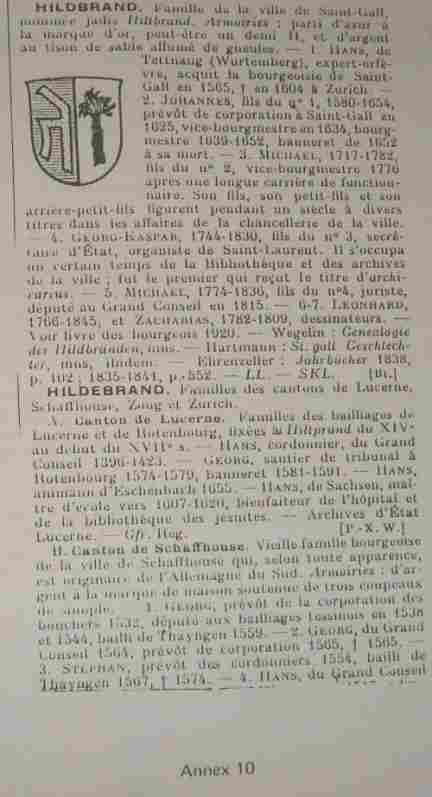
Annex 10: Historical and Biographical
Dictionary of the Swiss
|
NOTE: Just to make this clear:
Prof. Ataov searched for reference in regards to the "Swiss journalist," as
spelled in the newspaper (Emile
Hilderbrand). Just to cover the bases, he went with the other
variations (such as Hildebrand and Hildebrandt). One giveaway
of forgery is that HILDERBRAND is not even a normal
Swiss/Germanic name. The librarian from the two letters below
almost certainly searched for "Hilderbrand," but because it's
such a nonexistent name, the concentration seems to hsve
focused upon the legitimately Germanic "Hildebrandt."
|
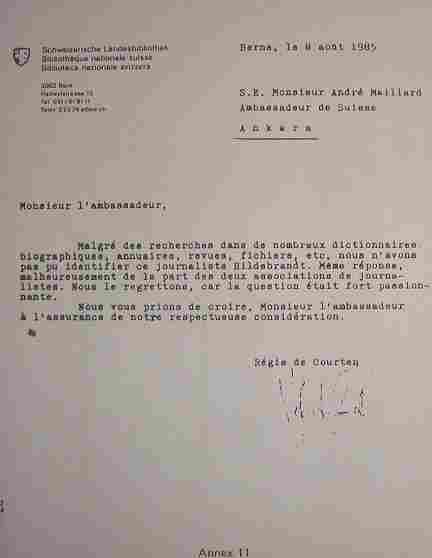
Annex 11: Aug. 8, 1985 letter from the
Swiss National Library to the Swiss ambassador to Turkey. It says they looked
through numerous dictionaries,
biographies, annuals, etc., but nothing to identify a journalist named Hildebrandt.
Unhappily, the letter continues, the same response came
from two journalistic associations.
I applied to the Swiss Embassy in Ankara, first to enquire whether it had any
information in back files (1926) on a visit to Turkey by a Swiss journalist. The
oral reply was that there was no record of such a visit. A written communiqué from
the Swiss Ambassador in Ankara further informed me that a Swiss diplomatic mission
was established in Turkey in 1926. I have also requested the same to ask the “Bibliotheque
National Suisse” ( Schweizerische Landesbibliothek, The Swiss National Library),
on my behalf, as to whether there is any information on a certain Emile (or Emil)
Hilderbrand (or Hildebrant) as a journalist or an artist. Two replies from the Swiss
National Library, dated July 31, 1985 and August 8, 1985, as well as the answer of
the Swiss Journalists’ Union (Zurich) indicated that they had searched several
dictionaries, biographies, annuals, reviews, reference cards and the like and that
they were unable to identify someone by that name (see Annex 11 and 12).
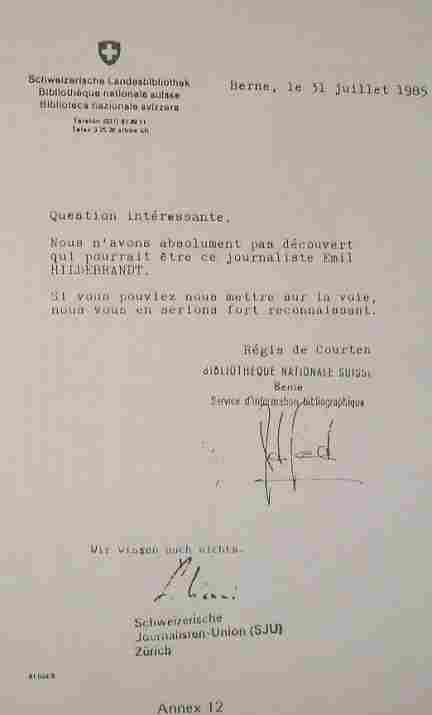
Annex 12: July 31, 1985 letter from the
Swiss Library commenting
"Interesting question," and following up with "absolutely" no
sign of a
journalist named Emil Hildebrandt.
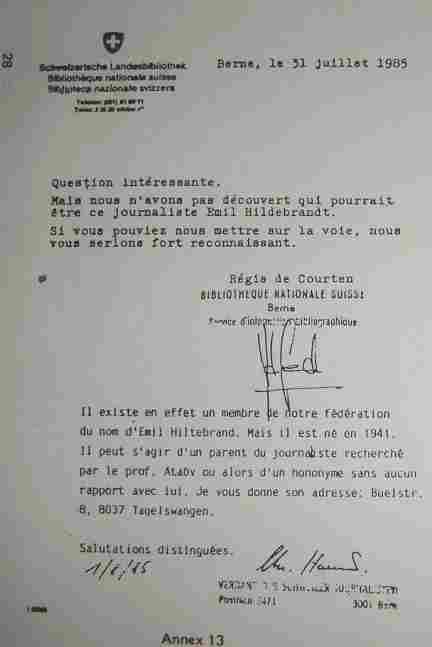
Annex 13: July 31, 1985 letter informing of the existence of a journalist
named Emil Hildebrand, born in 1941.
One of the letters (see Annex 13) I received mentioned a journalist by the same
name, but born in 1941 (fifteen years after the supposed interview). I have,
nevertheless, written to him (now working for the Tages Anzeiger of Zurich),
inquiring whether the elder Hildebrand might be his father or grandfather. He
replied (see Annex 14) that his forefathers bore the same name, but neither were
journalists and none had been to Turkey.
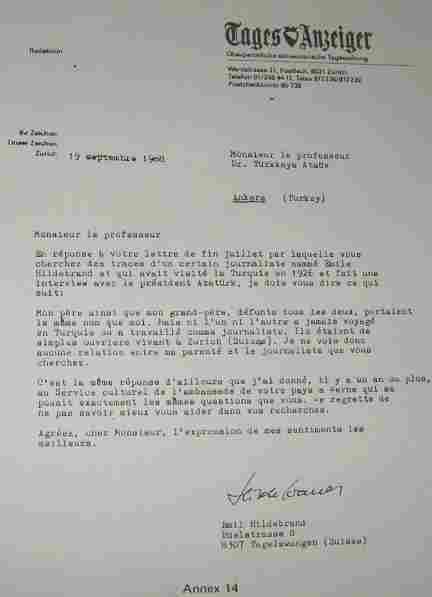
Annex 14: Letter from Emil Hildebrand. A
more readable version is here.
I have also continued my inquiries with Mrs. Leman Karaosmanoglu, the surviving wife
of Yakup Karaosmanoglu, one of Turkey’s leading men-of-letters, who had also
served as his country’s Chief Mission in Switzerland, Iran and Albania. Ambassador
Karaosmanoglu having passed away in 1974, I have consulted his wife whether they
have met this Swiss journalist while on duty in Bern. She replied (see Annex 15)
that during the rather long “twelve years of stay there they had never met any
writer or artist by that name although the Turkish Embassy had close and continuous
relations with the intellectual circles of that country and certainly with those who
had any relations with Turkey.” She specifically noted that had any Swiss writer
had the privilege of an interview with the Turkish leader, “the Embassy in Bern
would certainly be in permanent contact with him.” She also added that
Karaosmanoglu family, also personally very close to Atatürk himself, has never
heard of the Swiss journalist’s name while in Ankara nor of such an interview.
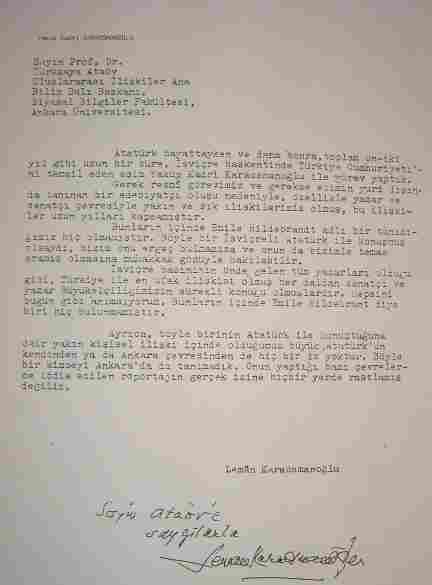
Annex "16": Letter from
Ambassador Karaosmanoglu's wife.
In view of the overwhelming evidence presented above, one should conclude that no
such interview, as appeared in the August 1, 1926 issue of the Los Angeles Examiner
has ever taken place with Turkey’s Mustafa Kemal. There numerous examples of
similar alleged interviews with public figures in the American popular press of the
1920s, resting only on the publisher’s imagination. But this does not stop the
Armenian propagandists of making use of this fiction rather frequently.
|
| |
|
|